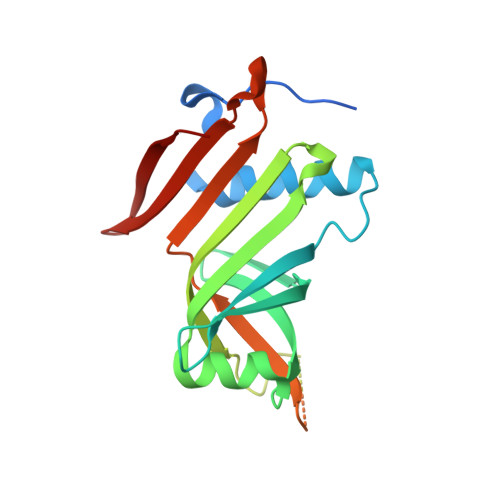Identification and characterization of the pyridoxal 5'-phosphate allosteric site in Escherichia coli pyridoxine 5'-phosphate oxidase.
Barile, A., Battista, T., Fiorillo, A., di Salvo, M.L., Malatesta, F., Tramonti, A., Ilari, A., Contestabile, R.(2021) J Biol Chem 296: 100795-100795
- PubMed: 34019876
- DOI: https://doi.org/10.1016/j.jbc.2021.100795
- Primary Citation of Related Structures:
6YLZ, 6YMH - PubMed Abstract:
Pyridoxal 5'-phosphate (PLP), the catalytically active form of vitamin B 6 , plays a pivotal role in metabolism as an enzyme cofactor. PLP is a very reactive molecule and can be very toxic unless its intracellular concentration is finely regulated. In Escherichia coli, PLP formation is catalyzed by pyridoxine 5'-phosphate oxidase (PNPO), a homodimeric FMN-dependent enzyme that is responsible for the last step of PLP biosynthesis and is also involved in the PLP salvage pathway. We have recently observed that E. coli PNPO undergoes an allosteric feedback inhibition by PLP, caused by a strong allosteric coupling between PLP binding at the allosteric site and substrate binding at the active site. Here we report the crystallographic identification of the PLP allosteric site, located at the interface between the enzyme subunits and mainly circumscribed by three arginine residues (Arg23, Arg24, and Arg215) that form an "arginine cage" and efficiently trap PLP. The crystal structure of the PNPO-PLP complex, characterized by a marked structural asymmetry, presents only one PLP molecule bound at the allosteric site of one monomer and sheds light on the allosteric inhibition mechanism that makes the enzyme-substrate-PLP ternary complex catalytically incompetent. Site-directed mutagenesis studies focused on the arginine cage validate the identity of the allosteric site and provide an effective means to modulate the allosteric properties of the enzyme, from the loosening of the allosteric coupling (in the R23L/R24L and R23L/R215L variants) to the complete loss of allosteric properties (in the R23L/R24L/R21L variant).
Organizational Affiliation:
Istituto di Biologia e Patologia Molecolari, Consiglio Nazionale delle Ricerche, Roma, Italy; Dipartimento di Scienze Biochimiche "A. Rossi Fanelli", Istituto Pasteur Italia - Fondazione Cenci Bolognetti, Sapienza Università di Roma, Roma, Italy.

















